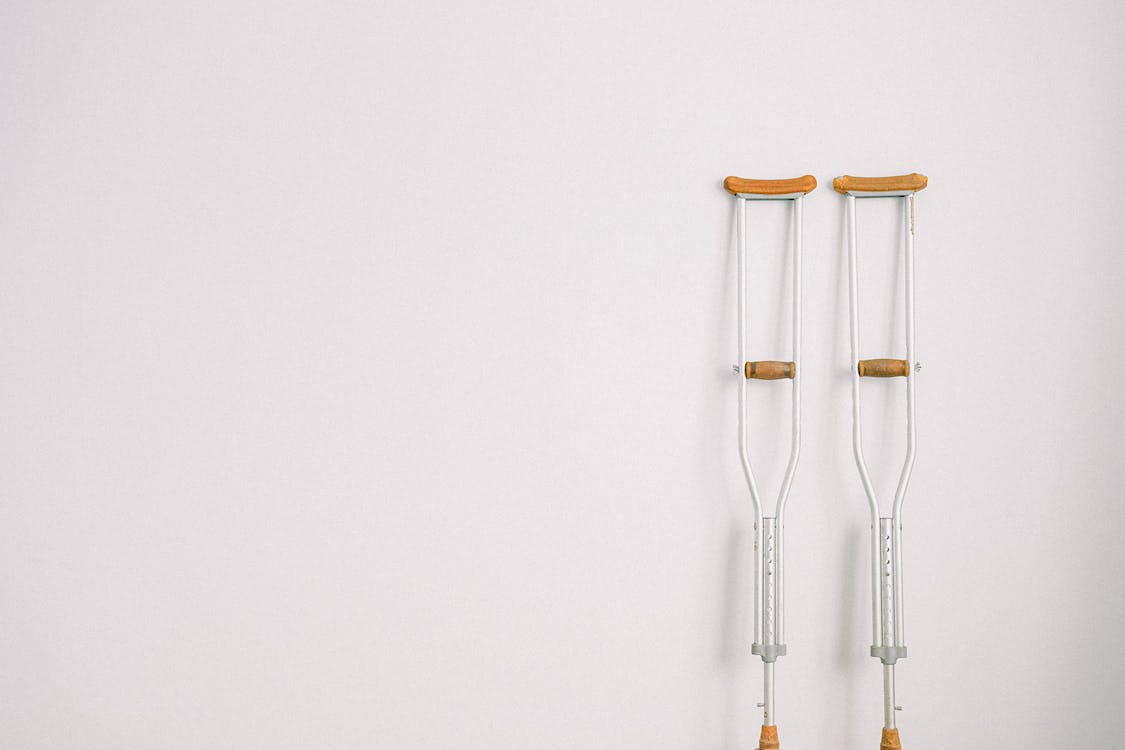A hip replacement is an operation to replace a damaged hip joint. This is the joint that connects the thigh femur bone to the pelvis, which carries the spine. It is a joint lubricated by synovial fluid and is a ball and socket joint. It is surrounded by a fine network of ligaments (a fibrous tissue that connects bone to bones) and tendons (fibrous tissue that connects muscle and bone) which help it move the leg and hips following motor (movement) signals from the brain and spinal cord.
A hip can become damaged following wear and tear, osteoporosis or osteoarthritis, rheumatoid arthritis or fractures. Due to its central location, it is not an easy joint to replace, and injury can result in considerable pain, specifically back pain, and sciatica (pain from the sciatic nerve which travels from the lower back through the hips and buttocks and legs). Sciatica is extremely sensitive because of its central location and can be debilitating, preventing movement, disabling a person, preventing sleep and causing bladder problems and leg weakness. A hip replacement is offered when the pain becomes too much for a person to stand, and their quality of life is severely impacted.
How Long Is Recovery from a Hip Replacement?
A hip replacement is an operation to replace a damaged hip that can take three to five hours. In this operation, a patient will have a damaged hip replaced with an artificial joint or will have part of the hip replaced. Preoperative care will be given to ensure the best outcome of the operation. This will include giving a patient blood thinning medication and ensuring that they have adequate nutrition before the operation to boost their immune system and prevent infection and inflammation (swelling that can occur when a person undergoes any invasive procedure where a foreign body is placed inside the patient) which can occur as a result of an operation. Preoperative care is about making the patient as healthy as possible before the operation to ensure that they are as fit as possible, and most likely to have a successful surgery.
How Long Is Recovery from a Hip Replacement?
After the operation, the aim is to get the person back on their feet as quickly as possible. Doctors and nurses will work with a complex interdisciplinary team including physiotherapists, nutritionists, occupational therapists, and nurses, to help a patient get healthy as quickly as possible. In the hospital a patient will be put on blood thinners to prevent blood clots, these will be then stopped when the patient returns home.
Recovery time depends on the age and overall health of a person but can be aided if a person makes good recovery decisions. These decisions can include ensuring that they have physiotherapy after initial rest. Physiotherapy will be tailored movements and exercises to help improve the hip joint's mobility. Occupational therapy will ensure that there are the right walking frames and crutches at home initially so that a patient does not fall and damage the joint. It will also include making sure that there are measures at home to help the person get in and out of the bath and cook for themselves and dress and undress.
How Can I Speed Up Hip Replacement Recovery?
Good nutrition and adequate sleep and reduced stress are essential for recovery. Good nutrition includes a diet that is high in omega-3 and other polyunsaturated fats which can help to reduce inflammation, as well as a diet high in protein, iron, folate, B12 and magnesium which can help produce new cells and therefore supports new muscle growth, which can help support the hip joint. Tendons (which connect muscle and bone), and ligaments (which connect bone and bone), are a vital part of the movement, required for the movement of the hip joint.
Stress and anxiety can weaken the immune system, making a person more prone to infection and increasing recovery time. This occurs because cortisol, a steroid hormone produced by adrenal glands, increases when we are stressed. Too much cortisol can impact the immune system and the formation of new cells, such as muscle and bone.
The best way to recover is in an environment that optimises for a calm and peaceful recovery with lots of rest, tailored exercises for recovery that are prescribed by a trained medical physiotherapist and nutritional medicine prescribed by a medical nutritionist or dietitian that will be personalised to the patient and help them to be the healthiest they can be.
Recovery will not be linear, with ups and downs and some days more painful than others. Pain medication will be prescribed but must be taken in moderation as often medication can mask potential problems and become addictive and less effective in excess.


 71–75 Shelton Street, Covent Garden, London, WC2H 9JQ
71–75 Shelton Street, Covent Garden, London, WC2H 9JQ +44 (0) 20 3376 1032
+44 (0) 20 3376 1032



